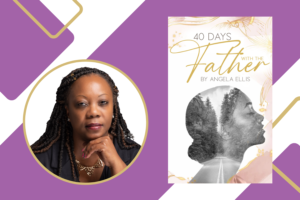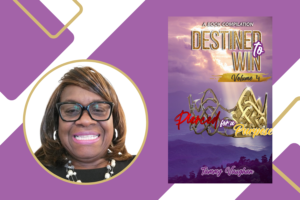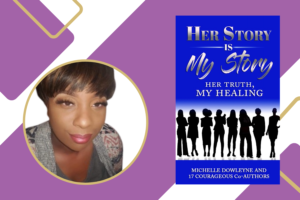Every year, thousands of Children’s Books are published all over the world. In the United States alone, millions of copies are being printed and sold. It is one of the most stable book genres of all time. At SHERO Publishing, we help hundreds of authors to illustrate and publish children’s books. Here are 6 steps to developing your children’s book.
1.Cut as many words as possible.
Children’s book writers must adhere to strict industry standards for word counts. Picture books for children up to age eight average 1000 words (though many are shorter); easy readers for ages five to nine are 50-2500 words (depending on the publisher and level of reader); chapter books (short novels for ages seven to ten) typically are 10,000-12,000 words; middle grade novels (ages eight to twelve) hover around 20,000-25,000 words, and young adult novels (ages twelve and up) weigh in at 35,000 to 45,000 words. You’ll always find exceptions, but if you’re a new author, don’t stray too far from the norm. When writing for the younger ages especially, every word must count. Picture book writers are often tempted to add scenes and secondary characters that make the story unnecessarily complex. A good first step when editing any length of book is to go page by page and diligently cut every word, phrase, scene or character that doesn’t directly contribute to the plot.
Once you’ve trimmed the clutter, the remaining words will be more powerful. Now you’re ready for the fine-tuning. The next five steps will not only help you polish what’s left, but also allow you to “show” rather than “tell” the story to your readers.
2. Begin with a bang.
Your readers will stick around for the first few sentences, but if they’re not hooked they’ll close the book. So make those sentences count. Start your story with action, dialogue, or set the mood in a way that’s so intriguing kids can’t walk away. You want to begin as close as possible to the story’s catalyst, that moment in which your character’s life changes from ordinary to extraordinary, and the plot takes off.
3. Go on a low-modifier diet.
A few adjectives and adverbs are fine, but if you feel you must pack your sentences with modifiers, you’re not getting the most out of your nouns and verbs. Strong verbs not only show action, they can also convey physical and emotional qualities. She went across the street only tells the reader that a character moved; adverbs are necessary to provide more information (went slowly, went quickly, went reluctantly). However, if you replace wentwith a more specific verb, that one word contains all the subtext you need (She trudged across the street. She scampered across the street. She stumbled across the street.)
Similarly, strong, exact nouns paint a particular picture in the reader’s mind. Adjectives such as big, little, beautiful, nice, old and great are too general to be of much use. All Sam’s friends thought he lived in a big, beautiful house doesn’t show the reader how big, or how beautiful, Sam’s house really is. Sam lived in a castle, or at least that’s what his friends thought gives the reader a specific point of reference, and also shows the contrast between Sam and his friends.
4. Reveal character with descriptions.
Descriptions should reveal how your protagonist operates within the setting of the story, or feels about the other characters. If the action stops cold so you can wax poetic about a sunset, then the description is more about you than your main character. You have to remain invisible — interpret all details through the eyes of your protagonist.
5. Use triple-duty dialogue.
Dialogue does three things: it supplies the reader with information about the plot, it gives insight into the speaker, and it shows the relationship between all the characters in the conversation. If your dialogue sounds too lifelike, full of pointless small talk or boring lists of the day’s activities, then you’ve cluttered the pages with conversational filler. First, whittle the dialogue down to the essence of the exchange. Then, add layers of subtext to what’s left. The use of body language, tone of voice, and bits of action that break up the dialogue (slurping a soda, staring out the window) clue the reader into how the characters feel about the what’s being said.
6. Pace yourself properly.
Picture books are written in a series of scenes, each of which can be illustrated. The average picture book is 32 pages long, but the front matter (title page, copyright page, etc.) eats up about four pages. So assume you have 28 pages for your text. Mark up your manuscript where you think the page breaks might go, or place the text on 28 separate pages, staple them together like a book, and read the story as you turn the pages. Does each page of text inspire a different illustration? Is there something that occurs every other page (a tantalizing turn of phrase, a rise in the action) that makes the child want to turn the page and see what happens next? Is the plot’s resolution withheld until the end, or are the last few pages a letdown? Does the story as a whole have a satisfying rhythm that makes it easy to read aloud?
Easy readers, also heavily illustrated, are designed to be read by the child, and so the stories are conveyed through action and dialogue. Keep the pace moving. Chapter books have slightly longer paragraphs and short chapters (about four pages each), but are still heavy on the action.
Middle grade and young adult novels can contain sub-plots and more description, but in any book that has chapters, it’s wise to end the chapter on an emotional note. Breaking in the middle of a tension-filled scene is a good strategy: The scratching grew louder as Jake crept down the hall. He stopped in front of the coat closet. His hand shook as he reached for the knob to open the closet door. Run! screamed a voice inside his head, but Jake’s feet felt glued to the floor. Just before he touched the knob, the door slowly swung open on its own. End the chapter here, and your readers will have a hard time putting down your book and turning on the television.





